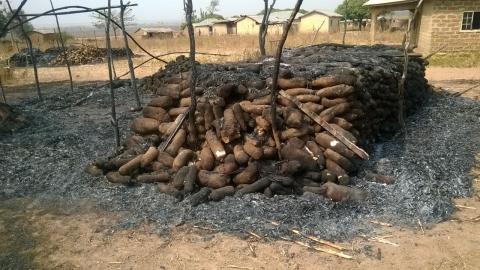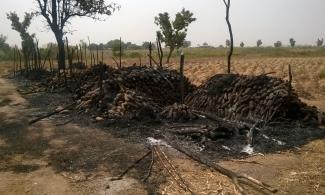
Sabondaga, a community of about 20,000 people, has been turned into a ghost town. Villagers have all fled for their lives, haunted by the fear of getting killed should they return.
In Sabondaga, a small village of predominantly farmers in Niger State, many locals are still counting their losses following the invasion of Fulani herdsmen. The attacks have continued even as concerns remain unabated over the possibility of unprecedented hunger and famine in Nigeria as a result of drought, conflicts and economic instability.
One of them is 55-year-old yam farmer Yusuf Dangwari, who spoke to me with his cap in his hand and tears in his eyes.
"The herdsmen attacked us on Tuesday, the 10th of January 2017 at about 11 am,” he started, pausing to cry profusely as we inspected the farm. "We were helpless. As you can see, they moved from one yam barn to another, burning all we have worked for over the years – about 500 million naira gone.”
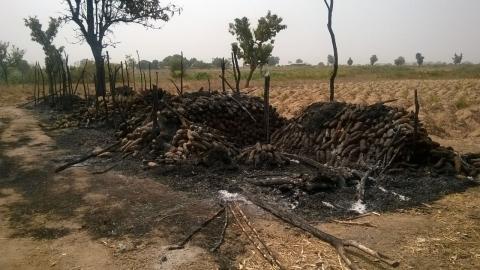
Sabondaga, a community of about 20,000 people, has been turned into a ghost town. Villagers have all fled for their lives, haunted by the fear of getting killed should they return.
The attacks by migrant herdsmen on indigenous farmers have gone on unabated for decades but have heightened within the last two years, with the nomads wreaking havoc from Enugu State to southern Kaduna State and Agatu community in Benue State.
Dangwari was inconsolable. “This is the height of man’s inhumanity to man, where do I start from? Who will even give me the seedlings to start all over?”
At some point again in the course of this inspection, he paused, stopped talking, sat on the debris and screamed; his voice reverberated across the empty walls and into the empty village, a testimony to the absence of his fellow villagers who had all fled following the invasion.
A recent study by a United States-based group, the Famine Early Warning Systems Network (FEWS NET), has revealed that already people in 45 countries were unable to feed themselves largely because of different forms of disasters and economic crises.
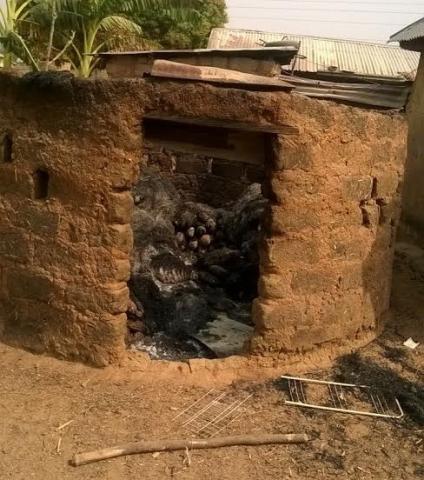
The study by FEWS NET shows that “the combined magnitude, severity and geographic scope of anticipated emergency food assistance needs during 2017 are unprecedented in recent decades and about 70 million people were in need of food aid.”
For Nigeria, however, with a seven-year insurgency by the Boko Haram group in the North-East leading to famine in the area in 2016, and an ongoing economic recession that appears to coexist with inflation, where the cost of staple goods have continued to rise, Mamman Dawu, another middle-aged farmer, says, “with the magnitude of grains, crops, and yams burnt during the attack, we will not have food items to take to the market.”
For the Gbagy/Gbari people of Niger State, farming has been their major occupation for centuries.
“It will take a long time for us to heal from this attack,” said Dauda Musa, also a farmer. "The herdsmen say they want to take over our land and chase us out, but we would rather die than submit to this level of bullying.”
However, Alhaji Isa Dogo, 62, said that farmers have lost far more than crops.
“On the 17th of January 2017, when the herdsmen invaded us in Barkuta Nuwakobi village along Garuta road, they stole 300 of our cows and killed our brother, Ibrahim Saidu, who confronted them. He was slaughtered,” he said.
“In jubilation, they attacked our community, burning all our people labor for, armed with cutlasses and AK-47 rifles, destroying all they could set their eyes on.”
Alhaji Dogo claims police officers, civil defense officials, and villagers were all slaughtered in the process.
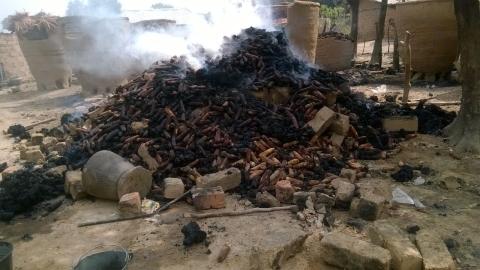
In November 2015, the Global Terrorism Index named Nigeria’s Fulani militants as the fourth deadliest terrorist group in the world.
The report revealed that the “little-known group, formed of individuals from the semi-nomadic pastoral ethnic group Fula people existing across several West African nations, has seen a dramatic escalation of its activities in the past year.”

A 35-year-old Fulani who spoke in his native Fufulde language told this reporter through a local interpreter that the invasion of the community was done in retaliation for the killing of a Fulani by the community. The man, a resident of the internally displaced persons (IDP) camp for Fulanis, insisted that villagers often attack his people, too, and the stories go unreported. According to him, “no Fulani man will forgive the killing of another Fulani.”
Only recently, a lawmaker from Niger East Senatorial District, Senator David Umaru, claimed that cattle rustlers and armed bandits murdered over 400 people across various communities in the zone in 2016.
Senator Umaru told reporters in Minna that several livestock, including cows, were rustled, while women and girls were abducted and raped by the marauders, who also burnt houses and other property.
He listed some of the communities to include Kaure, Kusasun, Mwaignu, Sabon Gida, Kwaki, Ajata, Kushaka, Bagna, Bassa/Kukoki, Allawa in Shiroro and Rafi Local Government Areas.
Dangwari, who lost all he had, is now seeking refuge in Suleja, a community just a few kilometres away from Abuja, with his paternal uncle. He hopes to receive the capital necessary to start a new life in the city and never return to the village he used to call home.
Mercy Abang is a Journalist–Media Fixer with Sunday Times of London, BBC, Al-Jazeera and a former Stringer with the Associated Press. She tweets at @abangmercy.
